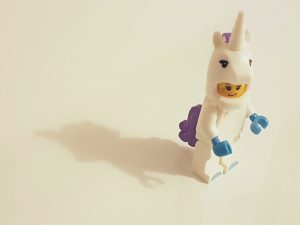Last week I spoke with one of my advertising partners about some changes we are making to their marketing strategy and how Reach & Frequency Matter When Buying Advertising. Even though we’ve been working together for several years, they needed a refresher on what is Reach and what is Frequency and why they matter.
A lot of media salespeople rely on ratings to justify the advertising schedules they pitch and while some of the data in rating surveys for radio and TV are important, most of what the sales people talk about is stupid.
I was asked again about a reach and frequency formula and that reminded me that while my advertising partner knew that there was something important buried in those terms, they weren’t sure how it all worked.
So let’s begin with what those two terms mean.
Frequency is how many times an individual person will see or hear your ad.
Reach is how many of those individuals will see or hear your ad.
Two very different numbers that are not the same.
Let’s convert this into dating, not advertising.
You have time and money to go on 10 dates.
If you have 10 people you are going out with on a one-on-one date, your reach is ten people.
If you go out with each of them just one time, then your frequency is one.
If you decide to take those ten dates and only go out with 2 people, then you lower your reach and increase your frequency.
You could split up those 5 dates evenly between the two, or you might decide to go out 10 times with one person.
Now look at these three possibilities and you tell me… which option do you think will most likely result in a long term relationship:
Option A: 10 dates with 10 individuals. Reach is 10, but frequency is only 1.
Option B: 10 dates with 2 individuals. Reach is 2, but frequency is now 5 each.
Option C: 10 dates with 1 individuals. Reach is 1, but frequency for one individual is 10.
Unless you are a jerk or just not compatible with those that you are dating, the last option is most likely to result in a long lasting relationship. The individual person that you go on 10 dates with is the most likely to form a positive bond with you out of all of those options.
Option A is like the business that advertises a little bit here and a little bit there but not with enough frequency to make an impact.
Option B is better because you’ve increased the frequency, but if it takes 10 dates to really form a relationship, you’ve fallen short.
Here’s how radio and tv sales people often present their stuff:
We have 3.0 share in 25-54 households and the other station only has a 2.8 share.
Sorry, but those numbers are meaningless. Unless the radio or TV sales person can tell you the reach and frequency numbers, walk away from game they are playing.
As a side note, this is the way many media salespeople are trained to sell and they don’t know any better. But there is a better way and that’s why we are talking about this right now.
You most likely know basic information about who you want to target.
Teens or 50 year olds.
Homeowners or renters.
Anything that can narrow down your ideal customer, from “everyone” to something more specific.
Then once you have this information or at least the concept down, you can decide which advertising mediums match your ideal customer.
In the radio business, we have stations that have different formats and play different styles of music, or perhaps they are a news and talk formated station. These different formats attract different people and while there are some folks who listen to more than one station, they usually have a primary station they listen to regularly. Maybe the station that they listen to at work, or the station they listen to on the weekend, or the station they start their day with to get all the important info they want to know.
Radio stations can provide you with this kind of data about their listeners to help you decide if they are a good match for your business.
We, in the broadcasting world, also have an idea of how many people listen at different times of the day and what their demographics are. This information is what we call “Cume” which is short for Cumulative Audience.
It is the Reach number that we’ve been talking about.
Some stations reach in the 3 to 6pm weekday afternoons might be 10,000 listeners, while others might have 40,000 listeners. Big difference right? The station with 40,000 reaches more people per week than the station 10,000 listeners.
These reach numbers are also the MAXIMUM number of individual people that will hear your commercial.
Frequency is how often each of those individuals will hear your ad. I have some advertisers that are on every hour between 3pm and 6pm. 15 times a week covers the 15 hours per week between 3pm and 6pm. Realistically, an individual person is not going to hear 15 ads per week from that advertiser because realistically, they may only listen 30 or 90 minutes a day.
But the rating numbers that are often used to persuade you to buy ads are rating points and shares, which determined by multiplying the number reach and frequency numbers together and sprinkle some magic fairy dust and poof… a unicorn grows another horn, or get’s its wings or something.
Please, forget that stuff and keep it simple.
Remember the dating example I gave you.
You need to know how many people you can reach because of the size of the audience where your ads will be place. And the frequency that your ads will be played to see if you are going to build a healthy long term, top of mind relationship with your potential customers.
This applies to any advertising options including direct mail, billboards, print, email, and social media too.
That’s it. Want my help? Let’s talk.

